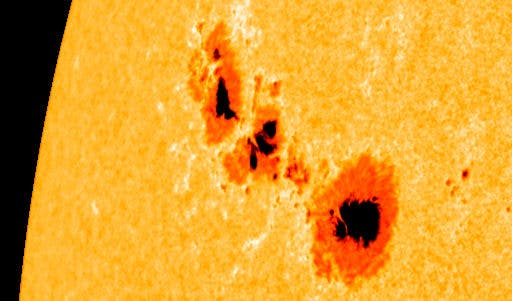Every three hours throughout the day, magnetic observers located all around our planet measure the biggest magnetic change that their instruments can record during that period. All the measured values are averaged all over the world and an index is obtained (the Kp index), telling researchers how disturbed the Earth’s magnetic field is on a 9 point scale.
The huge 1302 sunspot unleashed another powerful flare on Saturday morning, and yesterday (Monday) a geomagnetic storm with a Kp index of 8 started; it is still in progress. The Goddard Space Weather Lab reported a strong compression of Earth’s magnetosphere and simulations suggest that solar wind plasma has penetrated close to geosynchronous orbit starting at 9am.
The active region (AR) dubbed 1302 has already unleashed M8.6 and M7.4 flares on Sept. 24 and an M8.8 flare early on Sept. 25, but none of them were directed at our planet; however, this is bound to change as the sunspot changes its direction towards Earth, and once it does, we will definitely begin to feel its activity. AR 1302 is not slowing down, and its actually increasing its activity.
Via NASA
Was this helpful?




